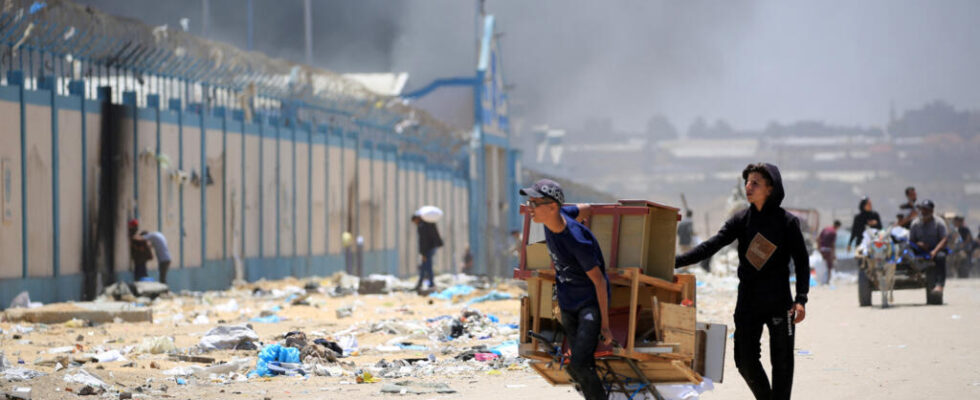Israeli air force and artillery intensely bombarded the town of Rafah on Saturday, hours after US President Joe Biden announced Israel’s road map for a ceasefire -fire with Hamas in the Gaza Strip.
4 mins
With our correspondent in Jerusalem, Michael Paul
The road map based on new Israeli proposals for a ceasefire puts the Israeli Prime Minister Benyamin Netanyahu facing its contradictions. Only a few hours after the announcement by Joe Biden of this three-phase plan, the first of which includes a 6-week Israeli truce, the release of vulnerable hostages and an Israeli withdrawal from the most populated areas of the Strip. Gazathe bombings continue.
The Israeli army claims to have launched a new targeted raid in the Sabra neighborhood, west of Gaza City and to have “ eliminated dozens of armed men and destroyed a military depot “. An army spokesperson reports intense fighting in the Rafah sector, including hand-to-hand combat in tunnels.
Operations are particularly concentrated in the west of the city, in the Tal al-Sultan district, where residents have reported air raids, tank fire and movements of military vehicles. “ Throughout the night, aerial and artillery bombardments did not stop for a moment in western Rafah “, a resident testified to AFP. “ Israeli shooters take positions on buildings overlooking Tal al-Sultan “. Intense artillery fire was also reported by witnesses in eastern and central Rafah.
At least 95 people have been killed in the last twenty-four hours, according to Palestinian sources. The Hamas health ministry announced a new toll of 36,379 people killed since the start of the war in Gaza almost eight months ago. Life has become apocalyptic » in certain areas of the south of the Gaza Strip, the UN was alarmed.
And for the second time since Joe Biden’s speech on Friday and still in the middle of Shabbat, Prime Minister Netanyahu’s office published a reaction, in English this time, to avoid any misunderstanding: The conditions set by Israel to end war have not changed, says the press release. The idea that Israel accepts a permanent ceasefire before the return of all the hostages and the destruction of Hamas simply does not hold water, the text emphasizes.
Could the American president therefore impose this ceasefire? Unlikely, says Philippe Golub, professor of international relations at the American University of Paris.
The United States’ capacity to influence the Israeli government appears very limited today.
Philippe Golub, professor of International Relations at the American University of Paris
The return of humanitarian aid via Rafah?
Meanwhile, the humanitarian situation continues to deteriorate in the Gaza Strip. On this point, Egypt is due to host a meeting on Sunday on “ the reopening of the Rafah border crossing » towards the Gaza Strip.
According to Egyptian sources, this is an Israeli-Egyptian meeting in Cairo but which will be supervised by the United States. The main objective of this meeting will be the reopening of the Rafah crossing point at the southern end of the Gaza Strip.
Since May 7, Israel has taken control of the Palestinian side of this crossing and the Egyptians have blocked the sending of humanitarian trucks since that date because they demand the total withdrawal of this crossing point. The Egyptians announced that they refused to change the agreement reached in 2005 with the Palestinian authority and to deal with the Israelis. They see it as recognition of the Israeli occupation of Rafah, reports our correspondent in Cairo, Alexandre Buccianti.
Under American pressure, Egyptian President al-Sissi gave the green light last week for the passage of humanitarian aid through the Israeli Kerem Shalom terminal, but it is far from enough. We must therefore expect tomorrow a real American standoff against Egypt and Israel to allow the reopening of the Egyptian-Gaza border terminal.
